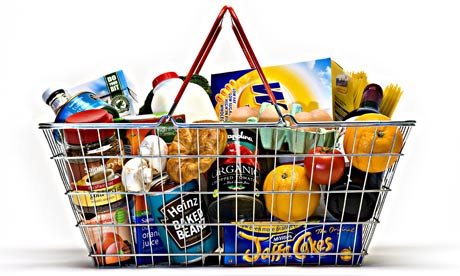
Pouring your milk then eating the bottle sounds less than tempting, but edible packaging is being touted as food technology's next Big Thing.
It's not entirely new, of course. Heston Blumenthal's been at it for years, wrapping palatable paper around packets of soup and urging us to eat salted caramels wrapper and all. Anyone who has eaten turron also knows the slightly odd sensation of rice paper melting in their mouth. But two US companies are currently vying to be the first to commercially exploit the "untapped market" for wrappers you can munch.
Leading the way (in publicity terms, at least) is the Dumbledore of food technology, Harvard wizard Dr David Edwards whose previous innovations include an "breathable" chocolate delightfully called Le Whif. He has now turned his attention to WikiCells - an edible membrane made from a biodegradable polymer and food particles - that can imitate "bottles" found in nature, such as grape skins.
So far, Dr Edwards and his team at Harvard's Wyss Institute have created a tomato membrane containing gazpacho soup, an orange membrane filled with orange juice that can be sipped through a straw, a grape-like membrane holding wine and a chocolate membrane containing hot chocolate. He believes pretty much any flavour is possible.
He recently told Harvard's campus newspaper Harvard Crimson that his team was working on a prototype bottle that had an eggshell-like hard coating in addition to the membrane that could be peeled off or eaten whole. "In the near term, we will be encountering WikiCells in restaurant settings," he told the paper. He then plans to expand WikiCells into shops and supermarkets.
Meanwhile, Indiana-based MonoSol is hot on Dr Edward's heels. Its water-soluble casings are already widely used to make squidgy pods of washing detergent. The company has been developing tasty edible films that are strong enough to act as packaging until they come into contact with water and dissolve. Products in the pipeline include individual servings of hot chocolate and other drinks that you slip straight into cups, and single servings of flavoured porridge. The company currently is punting the product to major food brands and it could be on the shelves in a year or two.
Closer to home, Leicester-based Pepceuticals last month won a £1.3m European research contract to develop an edible coating for fresh meat, which the company says could increase shelf life, reduce waste and do away with the need for oil-based plastic vacuum packs. It cites research that shows UK consumers spend more money on meat than any other food item, but waste an astonishing 570,000 tonnes each year. "The potential to apply an antimicrobial film in the processing factory should significantly prevent the deterioration of the fresh meat product, and save waste. It will revolutionise the look and feel of the traditional meat counter," the company claims (pdf).
The potential benefits of food packaging that can enhance shelf-life and then magically disappear are intriguing. The latest figures from the government's waste adviser, Wrap, reveal that food, drink and packaging waste in the UK supply chain is about 6.6m tonnes a year and costs £5bn. Dr Edwards, when not creating flavourful packaging or martini clouds, develops vaccines in spray form through his not-for-profit organisation MEND, and believes edible bottles could deliver huge benefits to the developing world. "People in a village in Africa could become plastic bottle-free and make things for themselves," he says. "It's really exciting from a humanitarian point of view."
Food safety regulators will have to have their say before edible wrapping goes on the menu, and surely conventional wrapping will need to go around the edible wrapping, or it will be too manhandled to be safe to eat. Before that point is reached, if the idea that your sirloin comes marinated in a slick of "safe, biologically active, antimicrobial film" makes you feel a little queasy, you're not alone. Even the packaging industry acknowledges that we may have a "psychological barrier" to eating the box, no matter how tasty they try to tell us it is.

